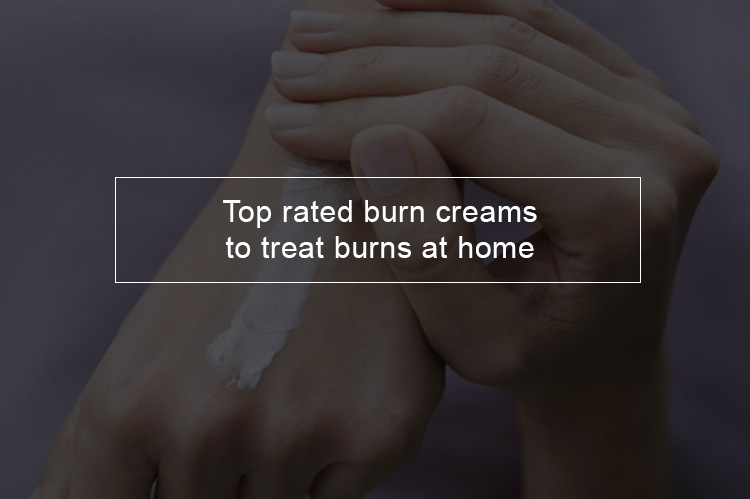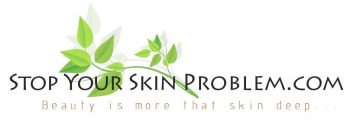
Majority of the burns, at least those that commonly occur at home, can be treated or healed with over-the-counter creams, lotions, ointments, and other medications. Some of these medications that come handy in such situations should be stored at home for quick relief whenever an accident occurs. Such accidents are very common. Burns can be caused by the sun, electricity, hot liquids, chemicals, and of course, fire. These burns cause different levels of injuries; the pain can range from very mild to very excruciating. Understanding the severity of the burn is very important to know the level of medical care needed. These creams from the pharmacist cannot be used for all categories of burns. The more severe ones need professional care; in fact, some are medical emergencies. The article will discuss some of the popular non prescription creams for burns along with other care needed for burns to ensure you heal properly.
Buying a non prescription burn cream
Before buying an OTC burn cream, there are things you should be aware of, not least of all, burn creams have different purposes. Some burn creams are specialized for relieving pain and soothing damaged skin, while others are meant to prevent infection and reduce scarring. At the initial stages of a burn wound, you should look for creams that focus on soothing the skin and has antibiotics. This will help relieve the pain and prevent infections on the burn wound. When the burn wound begins the heal, go for creams that reduce scarring.
Top 3 burn creams
The best OTC burn creams to try
All the burn creams mentioned here are all top rated. Someone can prefer one over the other depending on experience, packaging, price, or whether it is a gel, ointment, or cream. In short, it all boils down to taste. Here are our top burn cream picks.
Water Jel Burn Relief
This water-based burn product is antiseptic and has aloe vera and Lidocaine that moisturize and tea tree oil that kills bacteria. This Jel is good because it gives immediate and long-lasting relief to pain. This Jel is of a thick consistency and evaporates slowly; therefore, it stays for several hours on the wound.
Water Jel Burn Relief products are packed in individual packets designed to tackle mid-sized burn areas. This package makes them popular as they are small enough to be carried around in handbags, camping bags, and pockets. They have a 5-year shelf life.
Neosporin
This antibiotic cream is popular in treating cuts, scrapes, and small injuries. Neosporin is equally effective in treating minor burn wounds. It relieves the pain and protects the burn wound from infection. It also fastens the healing process ensuring there is minimal scarring. It comes in the form of a cream, thereby, forming a layer on the wound rather than penetrating the skin.
Water Jel Burn Jel
This product is also from Water Jel but comes in a different package, equally very popular. It contains antiseptic, aloe vera and Lidocaine for moisturizing, and tea tree oil for the bacteria. This relieves the pain and also prevents blistering and scarring. It comes in a large tube packaged individually.
Other over the counter burn creams
There are numerous other burn creams that are also top rated, not all can be mentioned. The choice of a burn cream depends on your experience with it. Here are some other popular OTC burn cream choices:
- Foille Medicated
- Alocane Maximum Strength
- Pac-Kit
- Burn-FIX- 2 Pack- Burn Care
- Curad Silver Solution
- AMBIX LABORATORIES Antiseptic First Aid Cream
- Medique Products 22373
How do you tell what degree a burn is?
Determining the severity of a burn injury
Over-the-counter burn creams are not recommended for all categories of burns. It is therefore essential to know how bad the injury is and whether or not the burn cream can be useful. Burn injuries depend on the total body area affected and the depth of the injury. The temperature of the heat and the time in contact with it will determine the depth of the injury; a hotter heat source will penetrate deeper into the skin. And the longer you are in contact, the deeper it becomes.
The depth can be gauged by capillaries refill. A fast capillaries refill with no blisters or break in the skin indicates a minor burn. Whereas a slow capillaries refill with white and molten-look indicates a very deep burn.
The percentage of the affected area is usually determined by the popular rule of nines method. The rule gives the following percentages for burn areas:
- Head and neck 9%
- Each arm 9%
- Each leg 18%
- Anterior trunk 18%
- Posterior trunk 18%
- Palms and fingers 1%
- Genitalia 1%
For children under 10, the head is a larger percentage of the body.
When should you seek medical attention for a burn?
When you should go to the hospital for a burn?
In children, 10% of burn damage requires immediate medical care. In adults, it is 20% of the body. The percentages are calculated using the rule on nines above. For multiple areas, the percentages are added up. These percentages can result in shock. Burns between 10%-20% in adults and 5%-10% in children are also potentially dangerous, and the victim may need to be referred to the hospital for proper care and wound management.
If a wound affects one of the airways, the hands, the feet, the genitals, or the face the victim should also be referred to a specialist. The same applies to victims who are very young, very old, and very sick. Victims of both electrical and chemical burns also have to visit the hospital. These are special types of burns that may require special assessment, care, or decontamination. Plus, the extent of the injury might not be visible to a non-professional.
Some burns also affect a very specific body part, and without proper care from a specialist, that part may not function properly again. There are also burns that may initially not seem serious but take very long to heal. You should have it checked out. Finally, watch out for infections. Poor wound care can lead to serious complications that require expert attention.
First aid for burns
Initial treatment of minor burns
Before the application of any burn creams and products from the drug stores, you should first contain the situation. Hence the need for first aid.
First aid for all types of burns
Whatever the category of burn you are facing, you should take the following steps:
Stop the burning
- The first step is to immediately put out the fire or stop contact with the hot surface, liquid, or steam.
- Remove smoldering things from the victim.
- Remove burning or hot clothing.
Remove constrictive clothing
Burns swell really first. Therefore, you should take off anything tight. This includes belts, jewelry, and any tight fitting clothes. The steps that follow next will depend on the degree of burn.
How do you heal a first-degree burn fast?
Cool the burn
For a first-degree burn, you should first cool it. Do this by either using a cool compress, i.e., a clean wet towel, or by running cool water over the burn. You can also immerse the burn in cool water. The key thing here is cool water, not cold water.
Protect the burn
Cover the burn with some clean cloth or a bandage that is not sticky, or if it is sticky, the sticky part should not touch the wound. To avoid infection, make sure the cloth is sterile and do not apply things on the wound that can lead to infection.
Treat the pain
This is where the OTC burn creams come in play. Natural remedies for burns can also help.
Should you seek medical help for a first-degree burn?
This minor burn rarely requires medical intervention. However, visit a doctor if:
- signs of infection begin
- there is increased redness
- there is increased swelling
- high fever
- the burn is larger
- the pain lasts for a while
- the last tetanus shot was more than ten years ago.
How do you heal a second-degree burn fast?
Cool the burn
Put it in cool water for 15 minutes. You can also use cool running water or cool compress. Do not puncture the blister or use ice.
Protect the burn
Use a sterile, nonstick bandage to loosely cover the burn.
Prevent shock
To prevent shock:
- lay the victim flat
- raise the feet about 12 inches high
- if possible, raise the burn area above heart level
- cover the victim with a blanket
If this is painful, or the person has a head, leg, or neck injury then do not do it.
Visit a doctor
Some second-degree burns do not require a medical professional. However, the doctor can diagnose the damage, prescribe medications and possibly administer a tetanus shot.
How do you heal a third-degree burn fast?
Call 911 and seek immediate medical attention
As a medical emergency, call for immediate help.
Protect the burn area
Use a sterile sheet to cover large burn areas. If the fingers and toes are burned, use a dry sterile dressing to separate the burned fingers from the rest. Do not soak in water.
Prevent shock
To prevent shock:
- lay the victim flat
- raise the feet about 12 inches high
- if possible, raise the burn area above heart level
- cover the victim with a blanket
If this is painful, or the person has a head, leg, or neck injury then do not do it. A pillow should not be kept under the head of a victim with an airway burn. This could lead to blockage of the airway. A person with a facial burn should sit upright. The doctor will then give oxygen and treat the burn.
Other types of burns and how to heal them
What of electrical burns?
These are burns resulting from electric shock. The damaged caused my not be easily identified as it occurs in the nerves and muscles. This can lead to muscle fiber breakdown and hence the release of chemicals into the bloodstream and eventually causing kidney failure.
How do you heal an electrical burn fast?
This too is a medical emergency and should rush to the hospital.
What of chemical burns?
There are chemicals that generate heat when they come into contact with the skin. This causes a chemical burn. These burns are classified according to their acidity or pH level, less than 7 are acids, and more than 7 are alkalis.
How do you heal a chemical burn fast?
- Remove the chemical to stop contact with the skin.
- Take note of the chemical that caused the burn.
- Contact a hospital or Poison Control Center. Some chemicals are very hazardous and require immediate professional care.
Wound management for minor burns
Taking care of burn wounds at home
After first aid, the burn wound needs to be properly taken care of. Here are ways to ensure you recover properly and promptly.
Dressing the burn wound
There are many dressings that can be used on burn wounds. The main thing is to ensure the wound is clean and moist. A protective dressing is recommended if there is a blister and if the blister has punctured. An antimicrobial dressing, like silver dressing, is usually recommended for this. If you notice an infection, contact a doctor. Most dressings come with instructions on how they should be applied and how frequent they should be changed. If you are not sure about all that, talk to your doctor.
Moisturizing creams for burns
Part of burn care is using moisturizer. This is because wounds dry the skin and also causes pruritus. A simple water-based cream is usually the best choice among the numerous options. Apply the moisturizer frequently as dry skin and pruritus from burn wounds can persist months after healing. There are some with sodium lauryl sulfate that should be avoided. They are found to do more harm than good.
Soaps and burn wounds
Soaps are not recommended when it comes to a recovering wound. This is because soap has properties that cause dryness. This does not augur well with wounds. What is recommended is the use of non-soap-based detergents and moisturizing creams to wash.
Keep the burn shaded from direct sunlight
Try to avoid the sun when healing from a burn. This will prevent the risk of worsening the burn and also reduce the pain. If you cannot stay away from the sun altogether, wear loose clothes that cover the area.
Do not pop burn blisters
Popping away those fluid-filled sacs resulting from burns can be very tempting. This will, however, lead to an infection, especially if the person popping it is not a doctor. You can let the burn blister be or visit a pro.
Conclusion on the best over the counter burn cream
There are many burn creams in the market. Other creams work better, some are better packed so more portable, and others are preferred on a personal level. The importance is that it works for you. Seek some advice from a professional if you need help to pick a cream from your burn.




